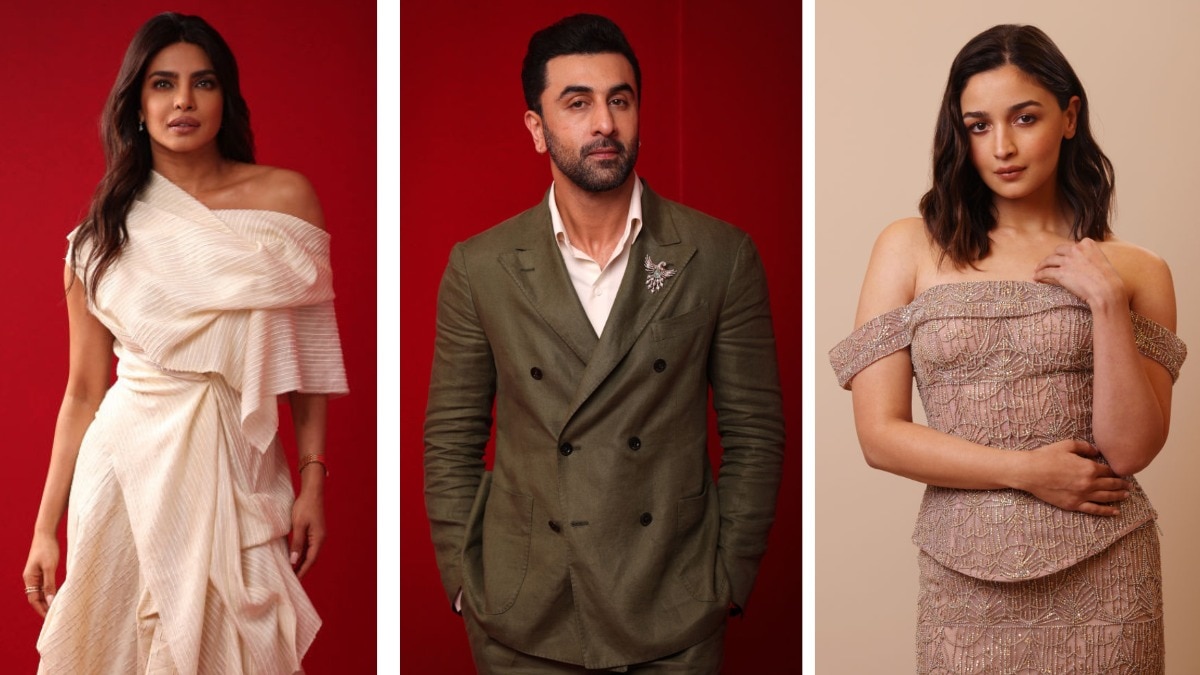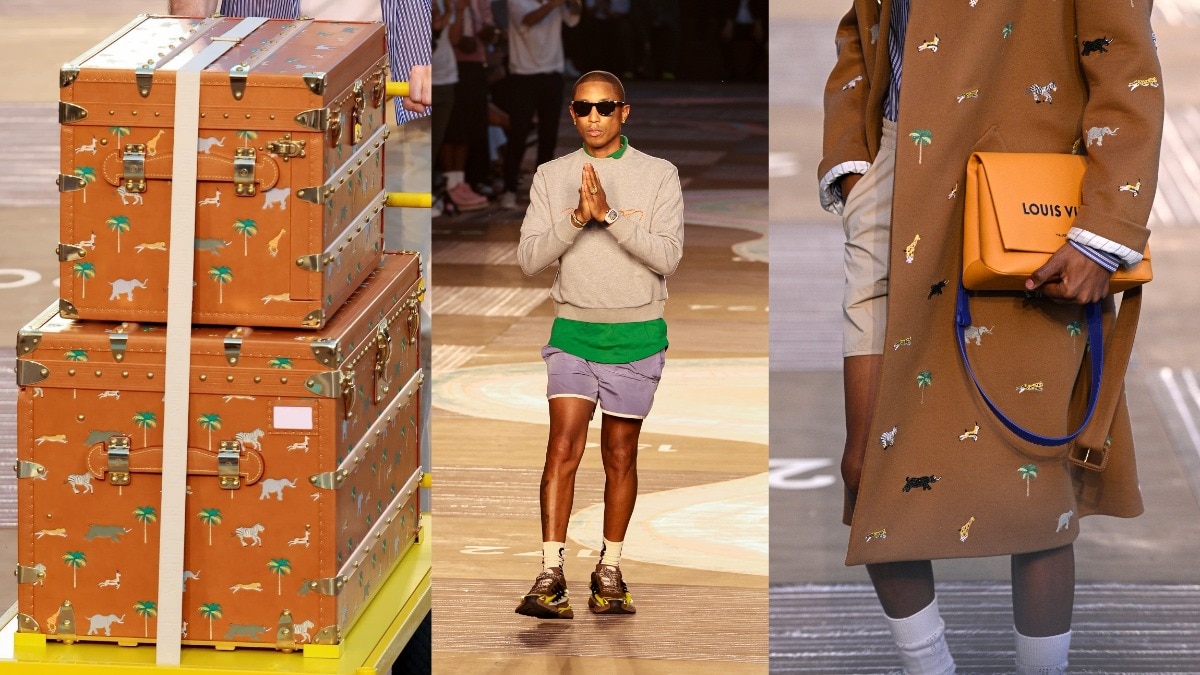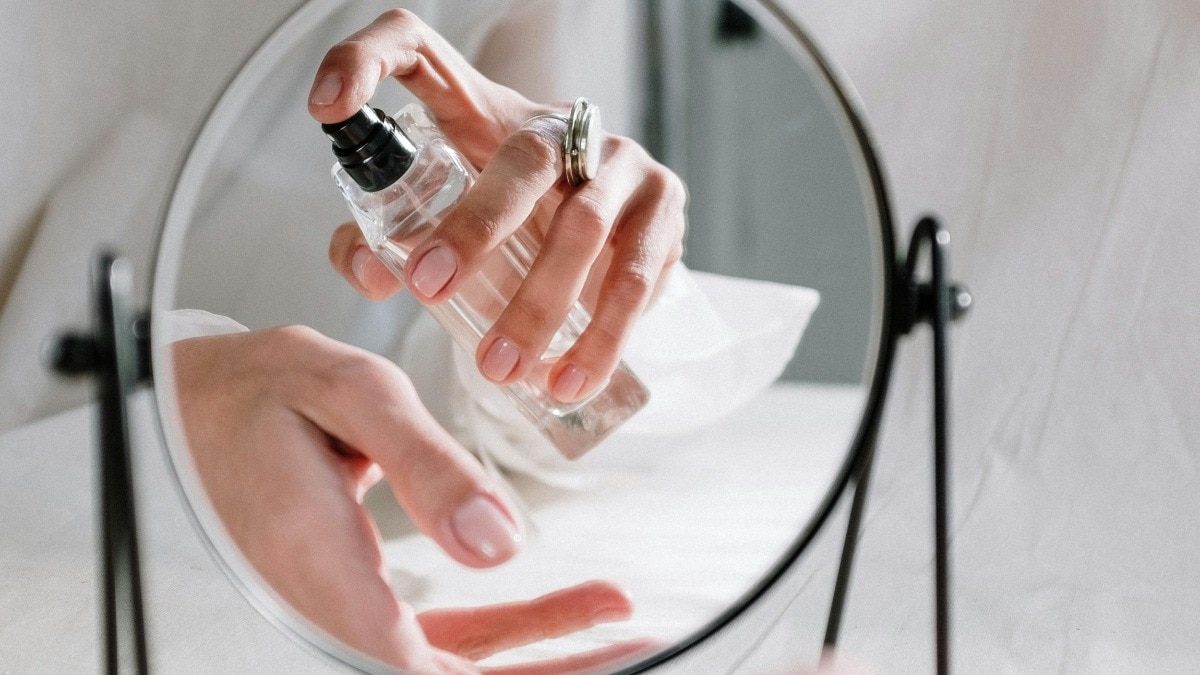Revisiting cinema's golden era with photographer JH Thakker
In the ’50s and ’60s—photographer JH Thakker invited legendary heroes and heroines to his studio in Dadar, Mumbai. The result: unforgettable pictures that continue to tug at the heartstrings.


The charm and grandiosity of the fifties and sixties of Indian cinema is unrivalled... Melodies you hum even today, poignant dialogues that summon a sniffle, and fanciful, albeit heroic scenes that leave you gawking in disbelief. The glorious golden era of Bollywood was a time of opulence and innocence, one no longer there in the films of today. So, to revisit—and revel—in this timeless period of ‘real’ romance, melodrama, and classic music, the Kiran Nadar Museum of Art (KNMA) has curated Sitaare Zameen Par, an enthralling exhibition featuring a series of powerful portrait photographs of Bombay Cinestars from the 1940s, through to the ’60s.
In an exclusive conversation with Bazaar India, Roobina Karode, Director and Chief Curator of the Kiran Nadar Museum of Art, shares special stories behind some of the portraits, how the craft of photography has evolved over the years, and more.

Harper’s Bazaar: Tell us what makes the Sitaare Zameen Par exhibition so special.
Roobina Karode: “This exhibition shines the spotlight on the hidden wealth of a forgotten era, and the genius of photographer JH Thakker. His documentation of Bombay cinema spanning two decades (1948-1968) was borne as a way of survival and resurrection of identity in post-partition India.
The exhibition was being planned for the last two years. Due to a dearth of archival material on JH Thakker, we spent ample time collating necessary information, documenting conversations with his son Vimal Thakker, and re-examining developed photographs and numerous negatives to reconstruct the master lensman’s time and place in the golden era of Bombay cinema. Sitaare Zameen Par aims to recreate moods of nostalgia and longing, not just through photographs, but also by paying homage to the historic India Photo Studio of Thakker—which is now facing threats of being razed down.
Curated by artist-photographer Ram Rahman in Mumbai a few years ago, a section of Thakker’s body of work was presented with a focus on the portraits. The KNMA exhibition, on the other hand, attempts to showcase a more diverse set of photographs—including those taken at film sets, images of actors relaxing during a break, and the portraits of singers, music directors, and even the performers known for their villainous roles. The almost 100 photographs are all unique, with only one edition, presenting a rare opportunity for viewers to
engage with the time made magical by JH Thakker.”

HB: What were the thoughts that crossed your mind when you first saw JH Thakker’s portrait photographs?
RK: “The portraits instantly caught my eye...they were rather mesmerising. The strong connection between fandom and stardom, which existed around the early phase of Bombay cinema, can be largely attributed to the splendour and enduring quality of Thakker’s photographs—which went far to generate a lingering aura; an impression of these stars remain etched in the hearts and minds of generations. Being a film enthusiast, I grew up watching these films, and I felt transported to that era through the enchanted world of Thakker.
Aside from this, as an art curator, the sculptural quality of these photographs was striking. I’d see Thakker as a sculptor—an idol-maker moulding his figures in light and shade. For what is crucial in Thakker’s oeuvre is the way he patiently carved out his images in a time-consuming manner, a stylistic approach that went against the snapshot aesthetics of photography, as well as the busy lifestyle we typically associate with, especially today, in the world of celebrities.”

HB: The golden era of Indian cinema often evokes feelings of nostalgia... Tell us the kind of experience you want the viewer to have as they walk through the exhibit.
RK: “One of the primary reasons behind setting up this exhibition was to contextualise the golden era of Hindi cinema via film figures who are now like distant heavenly bodies existing as silver shadows in the overarching cinematic universe. We want the viewer to experience not just nostalgia, but also wonderment and revelation. For younger sections of the audience, this otherworldly realm of celluloid cinema is an alien form; they are more accustomed to the digital multiplex experience. Through this show, they can acquaint themselves with these yesteryear stars who live on in the memory of countless moviegoers of the past. Just as cinema in India has a ‘magical realist’ inflection—offering a flux of images flickering on the screen as conduits for a momentary escape from reality—we want the audience to experience the glitz and glamour of the golden era.”

HB: Are there any special stories around these photographs that you’d like to share?
RK: “Many of these anecdotes are recounted by Vimal Thakker, son of late JH Thakker, and the present owner of India Photo Studio. One of the early stories is about how his father got bulk orders from Sunil Dutt to print passport-size portraits of actor Nargis, to later give away as autographed fan mail memorabilia. The affection from the Dutt family was special to JH Thakker, and as a result, Nargis remained his favourite star to shoot.
Mithun Chakraborty, when he was still struggling to get a break in the film industry, got his very first portfolio shot by Thakker, on whose basis he got admitted to The Film and Television Institute of India (FTII)...and the rest is history. Actors entrusted JH Thakker to portray the essence of the emotion embedded in a pose.
In an interview with us, Vimal Thakker recounted the time when actor Madhuri Dixit wanted to get pictures clicked for Screen Magazine, in the same style his father had shot the legendary Madhubala decades ago. She was extremely cooperative and impressed with the result... Some of these photographs are on view at the exhibit.”

HB: If you were to pick your favourite photographs from JH Thakker’s portraits, which ones would they be?
RK: “I was particularly drawn to Thakker’s nuanced and diverse portraits of Nargis. Performing alongside actors such as Dilip Kumar and Raj Kapoor, oftentimes eclipsing them, she was, at times, superlatively designated as the ‘First Lady of Indian Cinema’. Fearless and unbounded, and soliciting friendship with the opposite sex, Nargis’ characters were demanding heiresses, donning western dresses, men’s trousers, and shirts, as seen in some of Thakker’s works. More than five decades later, we witness the magic of Nargis’ persona, as well as the charm of the feminine masquerade that she exudes through the master touch of Thakker’s atmospheric compositions. It seems Thakker understood that she wasn’t conventionally beautiful... Meticulously posed and lit, what the lensman managed to create in these photographs were facets of Nargis’ passion and grace.”
HB: How, according to you, has the craft of photography evolved over the years?
RK: “In the age of such technological advancements, including AI and machine learning, JH Thakker’s practice stands in stark contrast to contemporary professional photographers. He relied on analogue photography and worked around its limitations to create truly arresting, timeless portraits. Since no pre-programmed special effects or CGI existed at the time, the veteran photographer had to resort to improvising makeshift special effect techniques, like fumes from an oil lamp as a stand-in for a gun smoke, or backlit spindles of chairs as dramatic textured backgrounds. Thakker only shot one final frame, owing to the prohibitive cost of film rolls and printing... He didn’t enjoy the luxury of deleting an unwanted shot, or editing it using the latest software.”

HB: What is it about the fifties and sixties of Indian cinema that is unlike any other?
RK: “If I had to wager as to why films from the fifties and sixties are incomparable, and still exert such a pull on our imagination, it may be because they envision a dream world for the viewer, even if for just a few hours. During this time, one can leave behind the drudgery of everyday life and inhabit a fulfilling fantasy of ideal moral values—where the good is rewarded and evil castigated, of adventure, romance, and wonder. No wonder, the Bombay film industry is referred to as maya nagari or ‘the city of dreams’.
Moreover, golden era films were presented in a unique format of a musical melodrama with spectacular set designs, melodious songs, impassioned performances, and elegant choreography. The songs were beautifully composed and sung by master playback singers such as Mukesh, or even by actors themselves, including the singing star Suraiya. The staying power of these songs was such that long after the film had disappeared from your memory, the melodies would remain etched in your mind.”

HB: Can you tell us how photography elements—touch-ups, background lighting, etc—were invited into this photo-series by JH Thakker?
RK: “As per Thakker’s recorded interviews, the two pillars of his photographic practice were the work of light and shade, and the actor’s ability and talent to pose. The play between the light and shade—the chiaroscuro effect, which has been highlighted in the current exhibition—was always under his control. He worked instinctively, endowing each facial feature with the right contour and textures. Often, he would bring in the backlights to create a halo effect, or silhouette the form of the muse with smoke. He would also sometimes ask the actor to allow a strand of hair be strewn over their cheeks, to introduce dramatic elements into a shot.”
Sitaare Zameen Par is on view at the Kiran Nadar Museum of Art till April 30.
square image: Actor Dev Anand, silver gelatin print, photograph by JH Thakker










